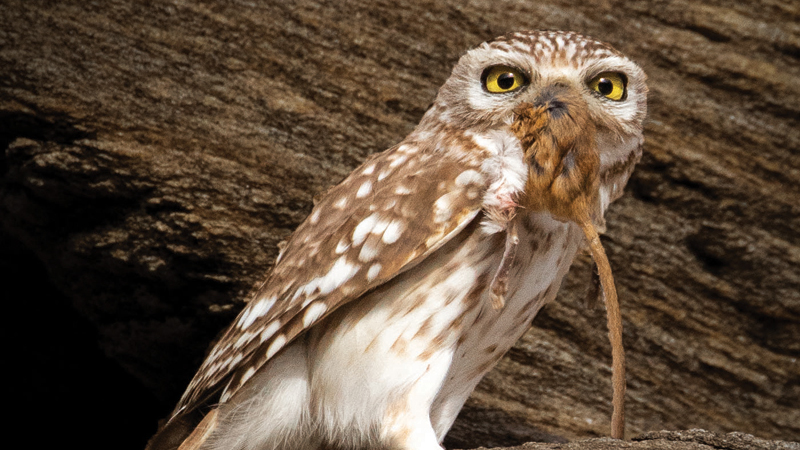


The Great White Pelicans usually don’t go to Salalah. But in 2018, they made a stopover, and the sighting sent Dhofar-based birdwatchers into a shooting frenzy thinking they only have two days to take photos of this rare visitors of Oman.
Sooraj Jayaraj is relatively new to the birdwatching community, but after joining the Salalah Photography Club Friday OS (Outdoor Shoot), he found out that such a hobby can be a source of relaxation and happiness.
He was one of the photographers who celebrated the rare Great White Pelicans visit and capturing beautiful moments made him realise why he got into birdwatching in the first place — it can be self-gratifying.
“Some species of birds are rare, and they don’t visit Salalah that often. We were lucky the Great White Pelican came. They usually do not stay at one place for more than two days during their journey, but they hang around Salalah for almost a month allowing us to capture the beautiful moments quite extensively,” he shared.
Sooraj considered the Great White Pelicans one of the most unique birds to capture.
“You don’t get opportunities that often. Other than the Great White Pelicans, for this year, I was extremely happy to have captured the Green Pigeon and the Barn Swallow. These birds were special to me because one, the green pigeons are difficult to spot or take a good shot of since they camouflage well with their surroundings like the bushes and the top of the trees while the barn swallow is a restless bird — they are always flying and are very hard to track because of their smaller size and flight speed,” he added.

How to get started
“I’ve only gotten into birdwatching in the last two years. In that short amount of time, I discovered different places where you get great returns for your patience and hard work. Some of the most interesting birds nestle at areas like Dahriz, Ayn Hamran, Wadi Nahiz, the Auqad Backwaters, Wadi Darbat, Raysut and even Mirbat,” he shared.
Sooraj said that in a given day and depending on experience, one can spot more than a dozen of different species of birds. The most common types include the Arabian Partridge, Flamingo, Steppe Eagle, Bar-Tailed Godwit, African Paradise Flycatcher, Purple Sunbird, Abyssinian White Eye, African Silverbill, Grey Heron and Indian Pond Heron. There are also a good number of the Common Moorhen, Spotted Thick-knee, Rüppell’s Weaver, Grey Headed Kingfisher, Cinnamon Breasted Bunting, Sooty Gull, Laughing Dove, Eurasian Collard Dove, Crested Lark, Barn Swallow, Blackstar among others.
Interest in bird watching was reported to have started in the 18th century. In its earlier form, it was also referred to as bird-killing because enthusiasts used to shoot the birds to observe them closely and to understand their forms, shapes and structure. From its grim beginning, it became a gentler and kinder hobby with the invention of binoculars and other modern paraphernalia. Today, birdwatching is also most enjoyed with the use of telephoto lenses allowing observers not only to capture amazing photos but observe the birds in their natural habitat.
In recent years, birdwatching has become its own community and enthusiasts went as far as creating their own lingos.
Most birdwatchers also became instrumental into the conservation of rare species as they provide a report not only into the sightings but the condition of the different bird species.
Things you need
Sooraj has gotten into photography thanks to his friend Krishnaraj Jayaram, one of the admins of the Salalah Photography Club. It was from him that he learned what he knows today.
As to what equipment is important for a hobbyist like him, Sooraj shared, “From my point of view a Telephoto lens with minimum 400 mm focal length is a must including a stable tripod. A bigger telephoto lens is required because we can shoot birds from a distance only and the tripod helps to keep it steady.”
“The club where I am a part of, we learn from each other. We learn about the birds from previous information gathered as well as new information brought in. It’s a community that gets together to help each other become better at identifying the different species of birds,” he said.
“My background is in IT, and that requires a different skill set altogether. For this particular hobby, the number thing you need is patience. Actually, it’s patience, patience, patience all throughout because you will be spending a lot of time waiting and observing,” he said.
Sooraj said that while he can’t recommend a specific time of the year of when to get great photographs of the bird, he said that whenever one is in Salalah, the location will always yield something.
“I’m not an expert on the season but from the last two years, Khareef (autumn) and the winter seasons are the best time for bird watching and photography,” he said.
Oman Observer is now on the WhatsApp channel. Click here



